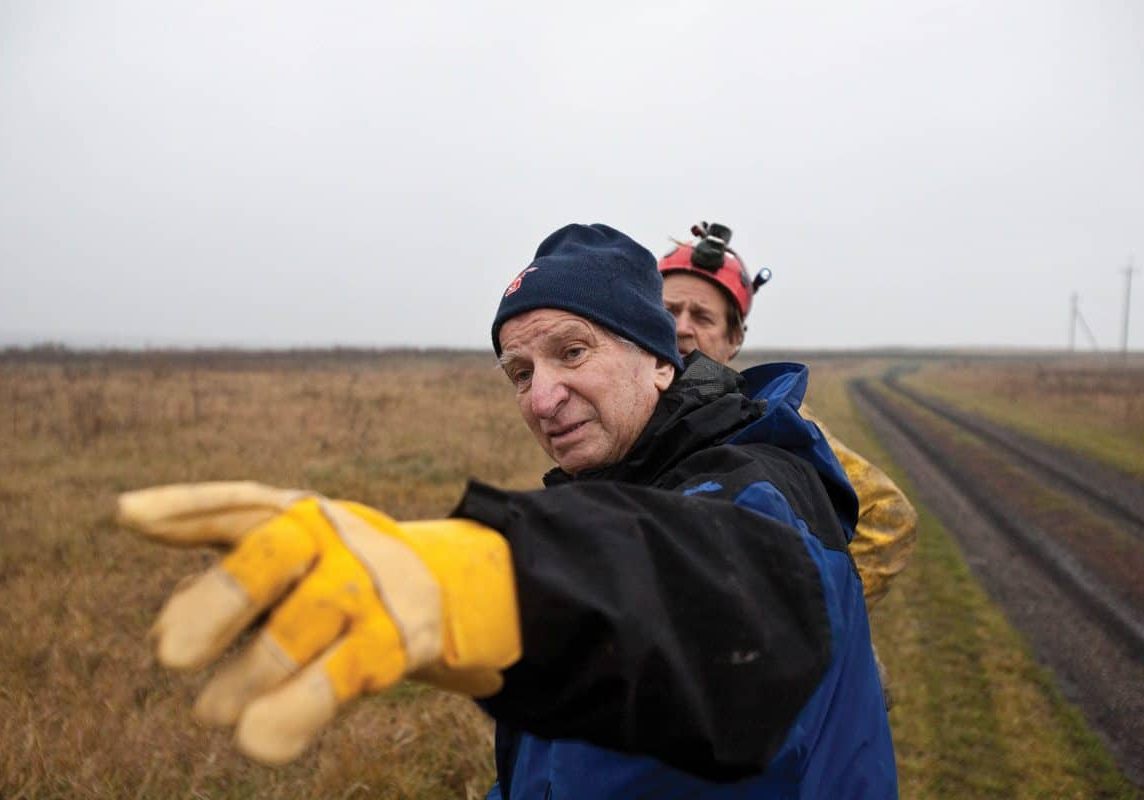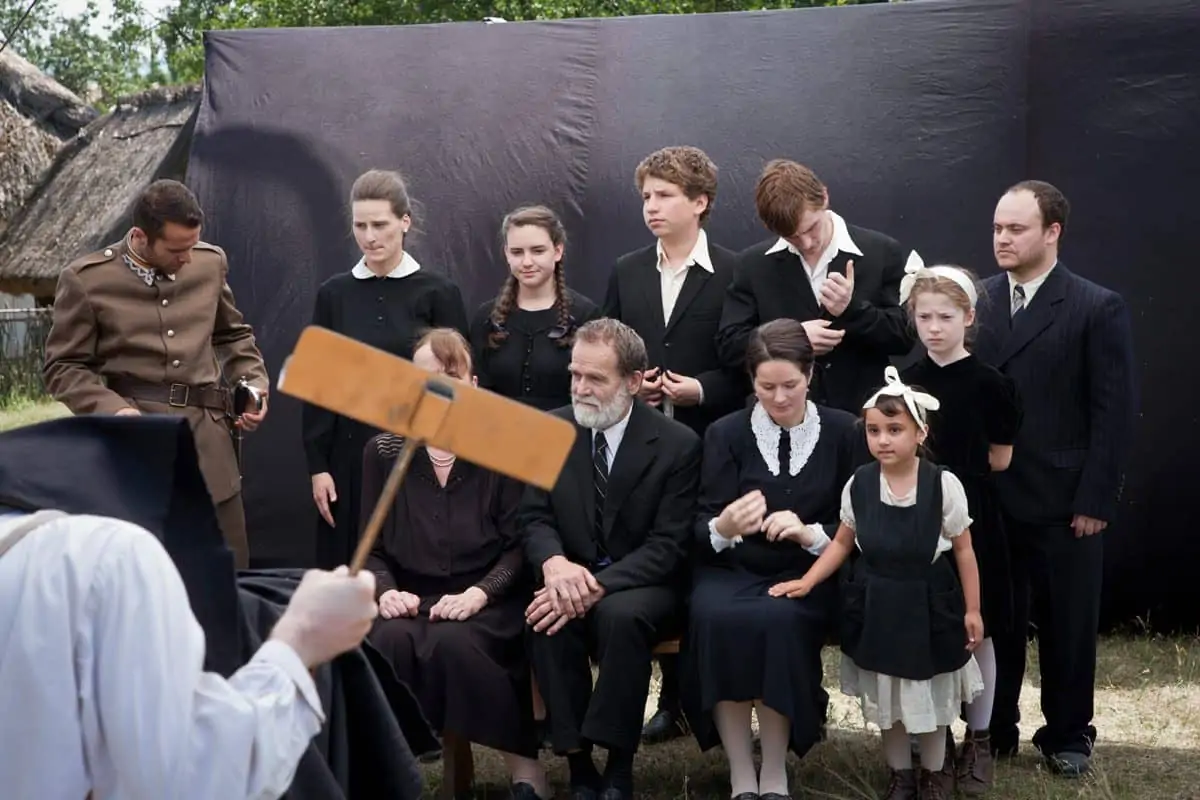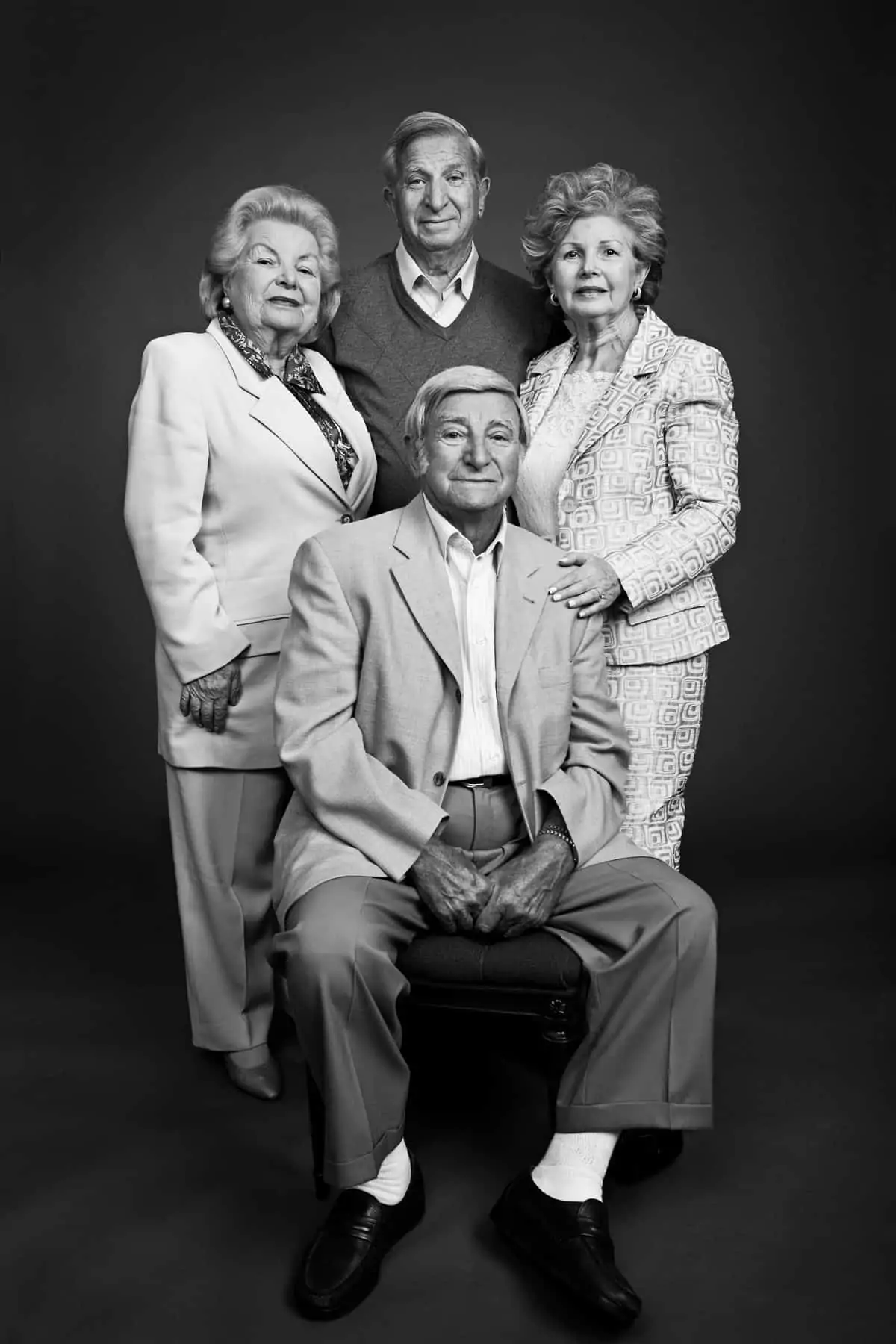Collaboration
Eduard Grau, Sean Kirby, Peter Simonite, Cesar Charlone & Zac Nicholson /
No place on Earth

Collaboration
Eduard Grau, Sean Kirby, Peter Simonite, Cesar Charlone & Zac Nicholson /
No place on Earth
No Place On Earth takes audiences on an emotional journey some 70 years back in time. The 83-minute documentary blends the memories of Holocaust survivors with images simulating how 38 men, women and children from five Jewish families, hid away in an extensive underground cavern for 511 days after the Nazi army occupied Ukraine.
Chris Nicola, an American potholer, discovered and explored the dark cavern while on a journey to learn about his family roots. He found a shoe, a key, a comb and other personal property that had obviously been there for many years.
“Everything I found was like a piece of a puzzle,” Nicola says. “I asked local people questions, but most of them were hesitant. Finally, someone said, maybe some Jews lived in the cave.”
Nicola subsequently learned that the Holocaust survivors migrated to Canada and the United States after the war. He made a concerted effort to locate and meet with several of them who shared memories about that time in their lives.
Janet Tobias, an experienced TV news programme producer, whose credits include 60 Minutes, Frontline and Dateline, read an article in National Geographic Adventure Magazine about Nicola finding and exploring the seven-mile long cavern. She contacted Nicola, and he in turn introduced her to Yetta Stermer, one of the survivors.
“After hearing Yetta sharing memories, I decided this was a really important story that must be told,” Tobias said. “Chris and I met with other survivors. Their stories gave me a sense of what their lives were like and what motivated their fight for survival.”

Five cinematographers collaborated with Tobias, depending upon who was available, during the five visits she made to Ukraine and Hungary over a two-year period and during interviews with survivors living in the United States.
Eduard Grau, Sean Kirby, Peter Simonite and Cesar Charlone brought a diverse range of narrative and non-fiction filmmaking experience to the project. The fifth cinematographer was Zac Nicholson. He was still in the dawn of his career.
“The drama was produced in three parts,” Tobias explains. “We shot re-enactment scenes in the cave when it was two degrees below zero outside. We also shot scenes during the spring and summer to get a sense of what life was like during different seasons. A sound stage in Hungary was used for scenes with children in the cave.”
Local residents participated as performers. There are also scenes produced in a village where the survivors lived before the Nazi reign of terror motivated them to move to the cavern.
“I spent time sitting in a very dark place thinking about how to define darkness for a film about people who went days on end in the without seeing a light from a candle,” DP Sean Kirby says. “We shot extensive tests before deciding to rent an ARRI Alexa digital camera mounted with a Zeiss 1.3 lens.”

Zac Nicholson mainly worked as a camera operator covering scenes from different angles. He also shot compelling scenes in the dark cavern using his own Canon EOS C300 camera without candlelight.
Elaborating on this Edu Grau remarks, “We wanted to create a contrast between deep darkness and softness captured with handheld shots in the cave. In the final scene, where the family emerges from the cave, I had an Ultra Prime lens on the camera. One of our goals was to amplify the blinding light that the family saw and felt. The wider angle, smoother movement and warmer look accentuated the feeling of release and safety.”
Peter Simonite observes,” There was a good amount of filming with children in the cave, as Janet wanted to tell that part of the through the children’s eyes.”
Words spoken during interviews with survivors paint powerful verbal pictures. “We were supposed to go to Canada by boat in 1939, but it didn’t happen,” Saul Stermer recalls. “I remember my mother saying, dark clouds are coming.”
Another survivor reminisced, “The Nazis took about 900 people from our community to a concentration camp. The rest of us were living in a ghetto. I remember thinking, my grandmother is a strong lady. Her goal in entering the cave was to keep the family together. I thought maybe I will survive if I am with her.”
A survivor recalled, “We collected water dripping from the ceiling in glasses. My family shared a glass of water a day. In May, 1943, we found a water hole in the cave.”

"There was a good amount of filming with children in the cave, as Janet wanted to tell that part of the through the children’s eyes."
- Peter Simonite
Some of the younger men left the cave at night to gather wood for fires and whatever food they could scavenge or buy. Those scenes were generally shot day for night. A survivor recalls donating her gold necklace to trade for food.
Another survivor tells about the time they caught a stray horse. Someone suggested killing and eating it. They hadn’t eaten meat for a long time. Someone else insisted that they weren’t going to kill the horse. Everyone agreed.
There is a memorable scene where Esther Stermer takes four relatives to visit the cave, including a niece who was born after her family settled in the United States.
“No one in the village where we lived said, we are happy to see you,” she says with a sad tone in her voice.

A review posted on the Internet observed, “The cinematography complements the telling of this story wonderfully… this is a story of real people trying to survive in a world where hell had no barriers and deserved no place on Earth.”
The survivors have 125 children, grandchildren and great grandchildren. The documentary ends with moving images of photographs of the survivors and their kin.
No Place On Earth premiered on a cinema screen in Chicago on April 17, 2013. Tobias attended the premiere in Germany in May.
“Senator Films, our distributor in Germany did a nice job of dubbing voices rather than using sub-titles,” Tobias says. “People in audiences were very emotional.”
Globalscreen is distributing No Place On Earth in other countries. The documentary will air on Channel 5 in the UK and the History Channel in the US during the autumn/winter of 2013. Tobias stresses that Channel 5 provided early support for the project.










